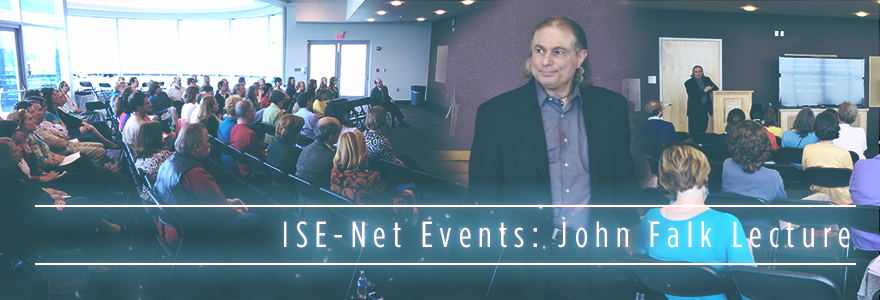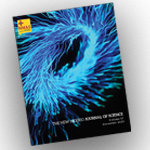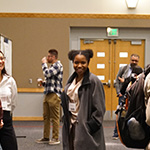NEWS
When, Why & Where Does the Public Learn Science

Have you ever wondered about what percentage of your life you spend in school? For those of us finishing up the last few weeks of the spring semester-- as a student, teacher or parent-- it probably feels like a huge number. But according to Dr. John Falk, the Sea Grant professor of Free-Choice Learning at Oregon State University, for the average American the answer is less than 5% of your waking hours are spent in school. A little quick math reveals that 95% of your life happens outside of a school environment, which has huge implications for members of the New Mexico Informal Science Education Network (NM ISE Net), an education and outreach project supported by NM EPSCoR and SENCER.
On Friday, April 11, 2014 Dr. Falk presented “When, Why & Where Does the Public Learn Science: An Ecosystem Approach?” at the Anderson Abruzzo International Balloon Museum in Albuquerque. More than 70 people attended and participated in a lively discussion.
Dr. Falk shared some of his fascinating research results:
- Only 18% of the variance in people’s science knowledge is associated with school learning. A roughly equal percentage is associated with people’s work and a whopping 64% can be attributed to their participation in free-choice learning, like visiting museums and zoos, watching science television programs, hobbies and learning about science from on-line sources.
- In a longitudinal study of Los Angeles residents, one single museum, the California Science Center, had a major impact on the entire population’s knowledge of homeostasis. In 1998 prior to the opening of the Science Center, only 7% had a concept of homeostasis. By 2009, the number had risen to 20%!
And he posed some provocative questions:
- 99% of public education funding goes to schools but are they delivering 99% of the value?
- Can we change what the public thinks of as “public education”?
- Whose responsibility is it to continue the learning that starts in schools?
Learn more about Dr. Falk’s work:


